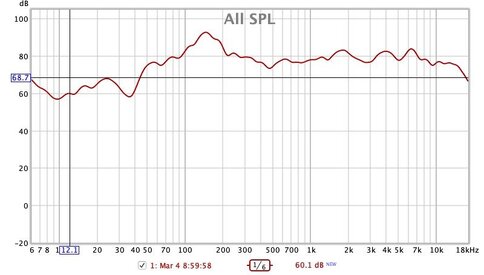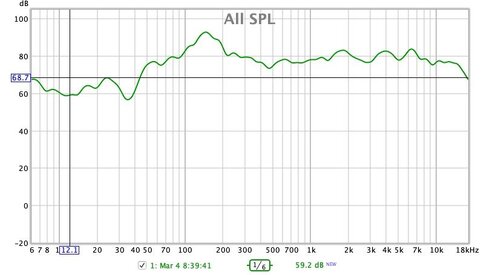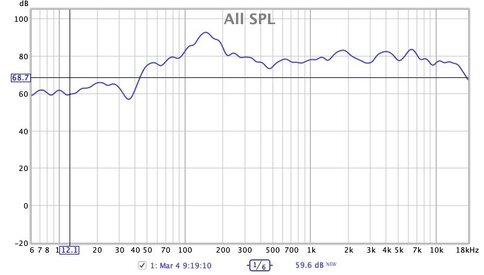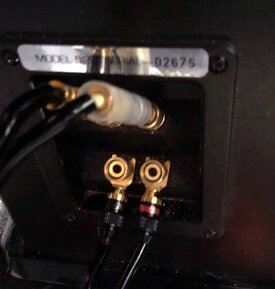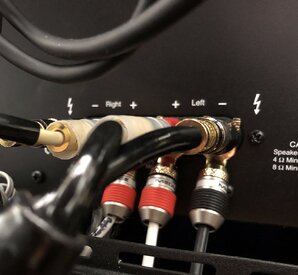Bi-Wiring Vs. Bi-Amping - Performance Enhancement or…
Why?
Well, for better or worse, my curiosity was once again piqued :-) I am a natural cynic (pragmatist) when it comes to claims of spectacular improvements in any field of endeavor. Regardless of that I am also (very conflicting I know) an eternal optimist and “a want to be believer”.
During a bit of research I ran across few articles on the web, both for and against, the idea of Bi-Wiring. What I found was much the same as the many other Audiophile Hoopla…. A community polarized and divided without much real science to back up the many claims and statements out there on either side.
Here are just a few of the many….
https://www.st-andrews.ac.uk/~www_pa/Scots_Guide/audio/biwire/Page1.html
https://www.audioholics.com/audio-video-cables/bi-wiring-from-amplifier-to-loudspeaker(somewhat based upon the St. Andrews College findings/statements in the first link)
http://www.achievum.eu/bi-wiring.html
https://forums.stevehoffman.tv/threads/bi-wiring-advice-from-vandersteen.359539/
https://www.qacoustics.co.uk/blog/2016/06/08/bi-wiring-speakers-exploration-benefits/
Now I am not entirely new to the idea of Bi-Amping but had never actually tried the simpler (but much more contested) of the two schemes, Bi-Wiring. And, although I knew what Bi-Wiring was and how it was accomplished, I had always dismissed it as drivel.
Back in the day when building large PA systems we effectively used Bi-, Tri-, and even Quad-Amping configurations using electronic crossovers and separate amps on the passive speaker cabinets of that time period (70’s and 80’s). At that time there were none of the amplified cabinets with the built in electronic crossovers and amps of today so it was all done externally. When done correctly huge amounts of coherent sound pressure could be generated.
Even now I use a pair of Presonus ERIS 5 Bi-Amped nearfield monitors on my computer desk top. I’m just as sure many of you also use Bi-Amped, or even Tri-Amped systems on your own computer systems. And almost all of us use self-powered subwoofers in our systems resulting in a sort of Bi-Amped system as well.
But, after going through all of the information of the above links I was conflicted. There was some evidence to support the idea of Bi-Wiring (and with some supportive measurements) and much talk and arguments condemning or poo-pooing the idea (some also sporting math and measurements supporting their claims).
The yea-sayers reported increased definition, better lower and highs, lower IMD, and reduction of crossover notches. The nay-sayers pointed to measurements, scientific logic and physics to prove that it just ain’t so. While normally in this latter group I noted that many of those leaning on the “scientific” and “mathematical” evidence did so without actually trying it. Hmmm, not so fair I thought…
Since I couldn’t find any reasons not to try it other than a modest outlay of money for the additional speaker cabling I started to design another “experiment”.
Now going into this I admit I could not see any downsides, other than spending a bit of money that I shouldn’t. But I could imagine some potential benefits in the extra run of speaker wires. After all, the greatest enemy of power transfer to the speakers is, or should be anyway, WIRE RESISTANCE. I know, I know, some tout and rage-on about impedance, inductance, capacitance, and even “Skin Effect” having an effect on speaker cables. My firm belief has always been and, and continues to be, that is nonsense at the frequencies and lengths of cable we normally deal with in Home AV systems. But, it’s really OK if your opinion differs… I don’t mind!
So, even if I didn’t end up Bi-Wiring, by doubling my speaker cables Ohm’s law tells me I should half (thereabouts anyway) my total resistance if the same gauge wire is used and the jumper remains on the speakers. That, at least, should result in a more effective and efficient transfer in power (current) to the speakers. So even if I didn’t Bi-Wire by removing the speaker jumper that may provide a “improvement”.
In order satisfy both conflicting sides of my psyche… the eternal optimist and the “Doubting Thomas” I jumped in with both feet.
My equipment lends itself pretty well to this type of fun so here we go!
Equipment used in this little experiment;
Marantz AV7703 Pre/Proc
OPPO UDP-203 Disk Player
Parasound A21 2 Channel Amp
Parasound A52+ 5 Channel Amp (used for the Bi-Amp testing)
BG Radia 520i Two-Way Speakers –
A note about these speakers. The BG 520 is a two way speaker that has 2- 6.5 Kevlar woofers for the bottom end and a 50” Planar Ribbon drive handling the Midrange and Highs. The Linkwitz-Reilly crossover crosses over to the 50” Planar Ribbon driver at 350 Hz.
Nominal impedance is 4 ohms. The speaker provides for Bi-Amping and Bi-Wiring by providing two sets of binding posts normally connected with a gold-plated copper strip between the high frequency and the low frequency sides.
The speaker wire used in the test is equal runs of Belden 5T00UP 10 AWG speaker cables.
https://catalog.belden.com/techdata/EN/5T00UP_techdata.pdf

Test equipment would be my MiniDSP calibrated microphone and my MacBook Pro Running REW.
Music would be;
Harlequin - Dave Grusin and Lee Ritenour – Track 1 – Harlequin
The Aliens Ate My Buick – Dolby Track 2
Two Against Nature - Steely Dan – Track 1 - Gaslight Abby
The First 20 Years - Spock’s Beard – Disk 1 Track 1 - The Light
Test Methodology – The Plan;
As I usually do with this type of experiment I kept all material in stereo and listened with the Marantz in the “Direct” or “Pure Direct” modes. These modes bypass Audyssey and other processing. In the Pure Direct Mode all processing, video or otherwise, along with bass management (Sub-Woofer) is bypassed. I wanted to hear the effect, or lack of effect, of Bi-Wiring and Bi-Amping on the presentation through the front right and left speakers only so subs and any other speakers in the room were a no-no.
I would listen to, record, and take room measurements with;
1. Normal Configuration(single run of Belden 10 AWG) – Speaker Jumper in Place
2. Paralleled Wire Runs - Double Runs of Cable – Speaker Jumper in Place
3. Bi-Wired- Separate Runs of Cable to High and Low Speaker Terminals (Bi-Wired)– Jumper Removed
4. Bi-Amped - using the Bi-Amp feature in the Marantz AV7703 and the Parasound A52+ Amplifier
I also decided I would record the changeovers with my Sony Pro Camcorder and a Blue Spark Microphone which is a Professional Large Condenser Microphone. I would do this as a comparative tool to assure that my Aural Memory would not be compromised during the changeover time.
While I know the recording-of-a-recording would never be as good as the original I figured it might prove useful to reveal any subtle differences that the time between switchovers might mask to my aging ears and (aural) memory :-)
The Tests
1. Single Wire Speaker - Single Run of Belden 10 AWG – Speaker Jumper in Place
This was my reference base... The sound to which I was familiar and have been living with for a while. While I normally listen with the Subs on, I have done listening without and this was what I was used to and expected. A smooth, full range sound with a well-defined, but somewhat lacking bottom end.
The room curve reflected what I was hearing and expected. Without the subs engaged the curve rolled off pretty quickly on the low end. The published specs for the BG Radia FS-520i are 70Hz to 20,000Hz +/- 6db and the curve reflected this at both ends of the spectrum.
I cycled through all of my musical selections trying to note something in each that might be revealing in nature if there were actually changes.
2. Paralleled Cable Runs - Double Runs of Cable – Speaker Jumper Installed
This test showed very slight changes in the measured room curve. While there were SLIGHT CHANGES to the measured sound there was certainly nothing significant or audible. Could have been changing humidity :-)
As I cycled through the four musical selections I thought I imagined a bit more firming up of the bass, a little more definition. But I chalked that up to wishful thinking and moved on.
3. Bi-Wired - Separate Runs of Cable to High and Low Speaker Terminals – Jumper Removed
I went to this step expecting little or no change in the room curve and that is exactly what I got. Almost Zerochange in the measured room response. SPL showed a little flattening in the very bottom end where the speakers should not have been outputting much anyway and was probably just the noise floor receding a bit (we are near a major highway and occasionally get some noise… but that’s another project !)
Comparing SPL/Phase graphs between the three configurations showed a somewhat cleaner phase signal around the crossover point and not much else.
A comparison of the Harmonic Distortion graphs showed very little difference between the three configurations. Certainly nothing that could be considered an improvement.
Despite my disappointment in the measurements I went ahead with the listening and found that I could not honestly hear a bit of difference or improvement.
4. Bi-Amped using the Bi-Amp feature in the Marantz AV7703 and the Parasound A52+ Amplifier
Sorry, I know I promised but No Can DO effectively. The highest the Marantz AV-7703 will crossover at is 250Hz. Since the BG’s crossover at 350 Hz there would likely be a big crossover notch.The Planar Ribbon Driver in the BG FS-520i crosses over at 350Hz. So Bi-Amping will have to wait for another day and an electronic crossover!
So, in short, the vote is still out on any advantages/improvements that Bi-Amping might provide.
Note: I took the time to listen to the recording I made of the various changeovers but it changed nothing as I still heard no difference between the three configurations.
Conclusions
1. There is NO Audible Benefit to Bi-Wiring. At least on my speakers…. A different speaker than mine, with a different crossover, may yield different results. I am certainly not saying that Bi-Wiring may not make a valid improvement in some speakers… Just not mine!
a. I started with 10ga speaker cables…. If you are currently using 18 ga, 16 ga or 14 ga doubling your wire ga may have a discernible effect on your sound (of course it may not… I’m just saying :-)
2. Expense-Wiseit is one of the less expensive “Audiophile” tweaks you can try. If your speakers allow Bi-Wiring and you have some extra speaker wire lying about give it a try and let me know what you discover. Unless, of course, you are currently running MasterBuilt Ultra Speaker Cables - $23,000 for 2.5 meters. But, in that case you probably should have purchased the Bi-Wire version for $35,000 (2.5 meters) in the first place! That price is per side by-the-way!
3. Bi-Amping – Testing not performed.... See note above!
Final Thoughts
Well, that’s all for this experiment. I’ve got to stay out of trouble for at least a little while (I’ve been officially warned!).
If anybody is thinking about trying Bi-Wiring, or has already tried Bi-Wiring, please let me know if it makes, or had made an impact on your speakers and sound! Enquiring minds need to know!
Hmmmm… I wonder though…. Maybe I should sacrifice my garden hose and run both speaker cables through it and then cover with some TechFlex. Then I’ll just finish it off with some “cable pants” and heat shrink.
Anybody in the market for some new Bi-Wire “Audiophile” Speaker Cables? Only $6000 per 2.5 meters with your choice of terminations :-) Fully custom and definitely a bargain at twice the price!
Why?
Well, for better or worse, my curiosity was once again piqued :-) I am a natural cynic (pragmatist) when it comes to claims of spectacular improvements in any field of endeavor. Regardless of that I am also (very conflicting I know) an eternal optimist and “a want to be believer”.
During a bit of research I ran across few articles on the web, both for and against, the idea of Bi-Wiring. What I found was much the same as the many other Audiophile Hoopla…. A community polarized and divided without much real science to back up the many claims and statements out there on either side.
Here are just a few of the many….
https://www.st-andrews.ac.uk/~www_pa/Scots_Guide/audio/biwire/Page1.html
https://www.audioholics.com/audio-video-cables/bi-wiring-from-amplifier-to-loudspeaker(somewhat based upon the St. Andrews College findings/statements in the first link)
http://www.achievum.eu/bi-wiring.html
https://forums.stevehoffman.tv/threads/bi-wiring-advice-from-vandersteen.359539/
https://www.qacoustics.co.uk/blog/2016/06/08/bi-wiring-speakers-exploration-benefits/
Now I am not entirely new to the idea of Bi-Amping but had never actually tried the simpler (but much more contested) of the two schemes, Bi-Wiring. And, although I knew what Bi-Wiring was and how it was accomplished, I had always dismissed it as drivel.
Back in the day when building large PA systems we effectively used Bi-, Tri-, and even Quad-Amping configurations using electronic crossovers and separate amps on the passive speaker cabinets of that time period (70’s and 80’s). At that time there were none of the amplified cabinets with the built in electronic crossovers and amps of today so it was all done externally. When done correctly huge amounts of coherent sound pressure could be generated.
Even now I use a pair of Presonus ERIS 5 Bi-Amped nearfield monitors on my computer desk top. I’m just as sure many of you also use Bi-Amped, or even Tri-Amped systems on your own computer systems. And almost all of us use self-powered subwoofers in our systems resulting in a sort of Bi-Amped system as well.
But, after going through all of the information of the above links I was conflicted. There was some evidence to support the idea of Bi-Wiring (and with some supportive measurements) and much talk and arguments condemning or poo-pooing the idea (some also sporting math and measurements supporting their claims).
The yea-sayers reported increased definition, better lower and highs, lower IMD, and reduction of crossover notches. The nay-sayers pointed to measurements, scientific logic and physics to prove that it just ain’t so. While normally in this latter group I noted that many of those leaning on the “scientific” and “mathematical” evidence did so without actually trying it. Hmmm, not so fair I thought…
Since I couldn’t find any reasons not to try it other than a modest outlay of money for the additional speaker cabling I started to design another “experiment”.
Now going into this I admit I could not see any downsides, other than spending a bit of money that I shouldn’t. But I could imagine some potential benefits in the extra run of speaker wires. After all, the greatest enemy of power transfer to the speakers is, or should be anyway, WIRE RESISTANCE. I know, I know, some tout and rage-on about impedance, inductance, capacitance, and even “Skin Effect” having an effect on speaker cables. My firm belief has always been and, and continues to be, that is nonsense at the frequencies and lengths of cable we normally deal with in Home AV systems. But, it’s really OK if your opinion differs… I don’t mind!
So, even if I didn’t end up Bi-Wiring, by doubling my speaker cables Ohm’s law tells me I should half (thereabouts anyway) my total resistance if the same gauge wire is used and the jumper remains on the speakers. That, at least, should result in a more effective and efficient transfer in power (current) to the speakers. So even if I didn’t Bi-Wire by removing the speaker jumper that may provide a “improvement”.
In order satisfy both conflicting sides of my psyche… the eternal optimist and the “Doubting Thomas” I jumped in with both feet.
My equipment lends itself pretty well to this type of fun so here we go!
Equipment used in this little experiment;
Marantz AV7703 Pre/Proc
OPPO UDP-203 Disk Player
Parasound A21 2 Channel Amp
Parasound A52+ 5 Channel Amp (used for the Bi-Amp testing)
BG Radia 520i Two-Way Speakers –
A note about these speakers. The BG 520 is a two way speaker that has 2- 6.5 Kevlar woofers for the bottom end and a 50” Planar Ribbon drive handling the Midrange and Highs. The Linkwitz-Reilly crossover crosses over to the 50” Planar Ribbon driver at 350 Hz.
Nominal impedance is 4 ohms. The speaker provides for Bi-Amping and Bi-Wiring by providing two sets of binding posts normally connected with a gold-plated copper strip between the high frequency and the low frequency sides.
The speaker wire used in the test is equal runs of Belden 5T00UP 10 AWG speaker cables.
https://catalog.belden.com/techdata/EN/5T00UP_techdata.pdf
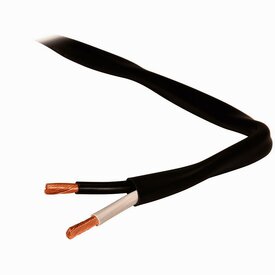
Test equipment would be my MiniDSP calibrated microphone and my MacBook Pro Running REW.
Music would be;
Harlequin - Dave Grusin and Lee Ritenour – Track 1 – Harlequin
The Aliens Ate My Buick – Dolby Track 2
Two Against Nature - Steely Dan – Track 1 - Gaslight Abby
The First 20 Years - Spock’s Beard – Disk 1 Track 1 - The Light
Test Methodology – The Plan;
As I usually do with this type of experiment I kept all material in stereo and listened with the Marantz in the “Direct” or “Pure Direct” modes. These modes bypass Audyssey and other processing. In the Pure Direct Mode all processing, video or otherwise, along with bass management (Sub-Woofer) is bypassed. I wanted to hear the effect, or lack of effect, of Bi-Wiring and Bi-Amping on the presentation through the front right and left speakers only so subs and any other speakers in the room were a no-no.
I would listen to, record, and take room measurements with;
1. Normal Configuration(single run of Belden 10 AWG) – Speaker Jumper in Place
2. Paralleled Wire Runs - Double Runs of Cable – Speaker Jumper in Place
3. Bi-Wired- Separate Runs of Cable to High and Low Speaker Terminals (Bi-Wired)– Jumper Removed
4. Bi-Amped - using the Bi-Amp feature in the Marantz AV7703 and the Parasound A52+ Amplifier
I also decided I would record the changeovers with my Sony Pro Camcorder and a Blue Spark Microphone which is a Professional Large Condenser Microphone. I would do this as a comparative tool to assure that my Aural Memory would not be compromised during the changeover time.
While I know the recording-of-a-recording would never be as good as the original I figured it might prove useful to reveal any subtle differences that the time between switchovers might mask to my aging ears and (aural) memory :-)
The Tests
1. Single Wire Speaker - Single Run of Belden 10 AWG – Speaker Jumper in Place
Room Curve 1 – Single 10ga Cable – Speaker Cable in place
This was my reference base... The sound to which I was familiar and have been living with for a while. While I normally listen with the Subs on, I have done listening without and this was what I was used to and expected. A smooth, full range sound with a well-defined, but somewhat lacking bottom end.
The room curve reflected what I was hearing and expected. Without the subs engaged the curve rolled off pretty quickly on the low end. The published specs for the BG Radia FS-520i are 70Hz to 20,000Hz +/- 6db and the curve reflected this at both ends of the spectrum.
I cycled through all of my musical selections trying to note something in each that might be revealing in nature if there were actually changes.
2. Paralleled Cable Runs - Double Runs of Cable – Speaker Jumper Installed
This test showed very slight changes in the measured room curve. While there were SLIGHT CHANGES to the measured sound there was certainly nothing significant or audible. Could have been changing humidity :-)
Curve 2 – Two 10ga Paralleled Runs – Jumper Installed
As I cycled through the four musical selections I thought I imagined a bit more firming up of the bass, a little more definition. But I chalked that up to wishful thinking and moved on.
3. Bi-Wired - Separate Runs of Cable to High and Low Speaker Terminals – Jumper Removed
I went to this step expecting little or no change in the room curve and that is exactly what I got. Almost Zerochange in the measured room response. SPL showed a little flattening in the very bottom end where the speakers should not have been outputting much anyway and was probably just the noise floor receding a bit (we are near a major highway and occasionally get some noise… but that’s another project !)
Comparing SPL/Phase graphs between the three configurations showed a somewhat cleaner phase signal around the crossover point and not much else.
A comparison of the Harmonic Distortion graphs showed very little difference between the three configurations. Certainly nothing that could be considered an improvement.
Curve 3 – Bi-Wired (No Jumper)
Despite my disappointment in the measurements I went ahead with the listening and found that I could not honestly hear a bit of difference or improvement.
4. Bi-Amped using the Bi-Amp feature in the Marantz AV7703 and the Parasound A52+ Amplifier
Sorry, I know I promised but No Can DO effectively. The highest the Marantz AV-7703 will crossover at is 250Hz. Since the BG’s crossover at 350 Hz there would likely be a big crossover notch.The Planar Ribbon Driver in the BG FS-520i crosses over at 350Hz. So Bi-Amping will have to wait for another day and an electronic crossover!
So, in short, the vote is still out on any advantages/improvements that Bi-Amping might provide.
Note: I took the time to listen to the recording I made of the various changeovers but it changed nothing as I still heard no difference between the three configurations.
Conclusions
1. There is NO Audible Benefit to Bi-Wiring. At least on my speakers…. A different speaker than mine, with a different crossover, may yield different results. I am certainly not saying that Bi-Wiring may not make a valid improvement in some speakers… Just not mine!
a. I started with 10ga speaker cables…. If you are currently using 18 ga, 16 ga or 14 ga doubling your wire ga may have a discernible effect on your sound (of course it may not… I’m just saying :-)
2. Expense-Wiseit is one of the less expensive “Audiophile” tweaks you can try. If your speakers allow Bi-Wiring and you have some extra speaker wire lying about give it a try and let me know what you discover. Unless, of course, you are currently running MasterBuilt Ultra Speaker Cables - $23,000 for 2.5 meters. But, in that case you probably should have purchased the Bi-Wire version for $35,000 (2.5 meters) in the first place! That price is per side by-the-way!
3. Bi-Amping – Testing not performed.... See note above!
Final Thoughts
Well, that’s all for this experiment. I’ve got to stay out of trouble for at least a little while (I’ve been officially warned!).
If anybody is thinking about trying Bi-Wiring, or has already tried Bi-Wiring, please let me know if it makes, or had made an impact on your speakers and sound! Enquiring minds need to know!
Hmmmm… I wonder though…. Maybe I should sacrifice my garden hose and run both speaker cables through it and then cover with some TechFlex. Then I’ll just finish it off with some “cable pants” and heat shrink.
Anybody in the market for some new Bi-Wire “Audiophile” Speaker Cables? Only $6000 per 2.5 meters with your choice of terminations :-) Fully custom and definitely a bargain at twice the price!
Attachments
-
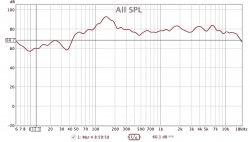 image.png9.4 KB · Views: 67
image.png9.4 KB · Views: 67 -
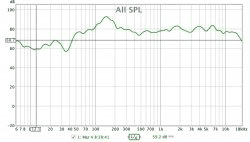 image.png9 KB · Views: 56
image.png9 KB · Views: 56 -
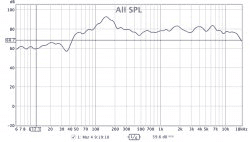 image.png8.5 KB · Views: 52
image.png8.5 KB · Views: 52 -
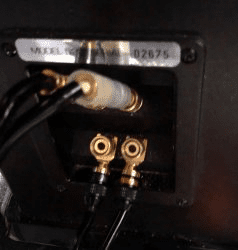 image.png23.8 KB · Views: 56
image.png23.8 KB · Views: 56 -
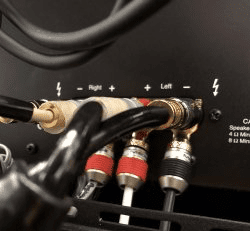 image.png24.3 KB · Views: 63
image.png24.3 KB · Views: 63 -
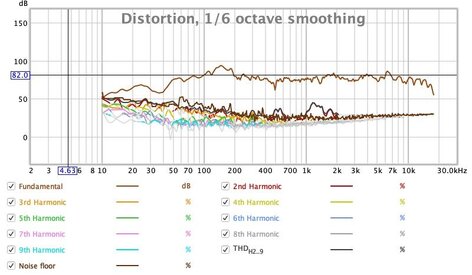 Mar 4 Direct Distortion 1-10ga Jumpered.jpg50.7 KB · Views: 61
Mar 4 Direct Distortion 1-10ga Jumpered.jpg50.7 KB · Views: 61 -
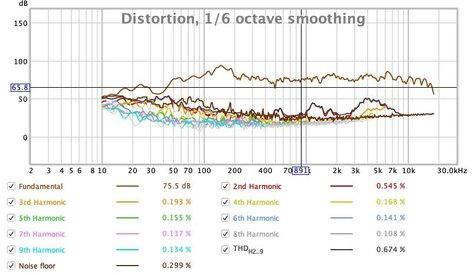 Mar 4 Direct Distortion 2 10ga Jumpered.jpg54.5 KB · Views: 51
Mar 4 Direct Distortion 2 10ga Jumpered.jpg54.5 KB · Views: 51 -
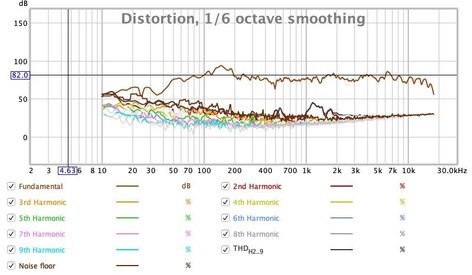 Mar 4 Direct Distortion Bi-Wire.jpg50.8 KB · Views: 49
Mar 4 Direct Distortion Bi-Wire.jpg50.8 KB · Views: 49 -
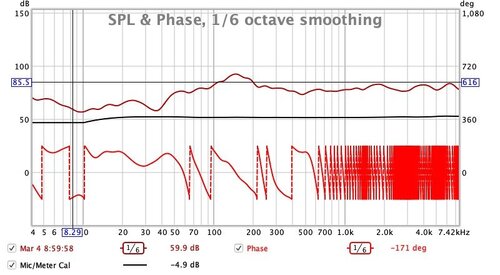 Mar 4 Direct SPL and Phase 1-10ga jumpered.jpg50.5 KB · Views: 49
Mar 4 Direct SPL and Phase 1-10ga jumpered.jpg50.5 KB · Views: 49 -
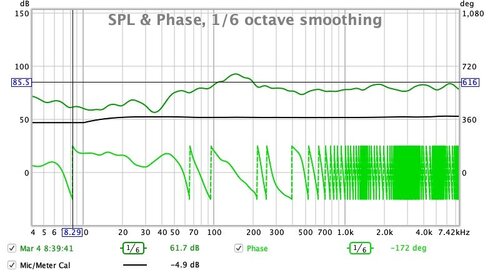 Mar 4 Direct SPL and Phase 2 10ga jumpered.jpg47.9 KB · Views: 44
Mar 4 Direct SPL and Phase 2 10ga jumpered.jpg47.9 KB · Views: 44 -
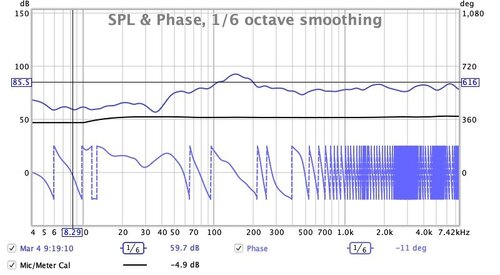 Mar 4 Direct SPL and Phase Bi-Wire.jpg47.9 KB · Views: 45
Mar 4 Direct SPL and Phase Bi-Wire.jpg47.9 KB · Views: 45
Last edited:







